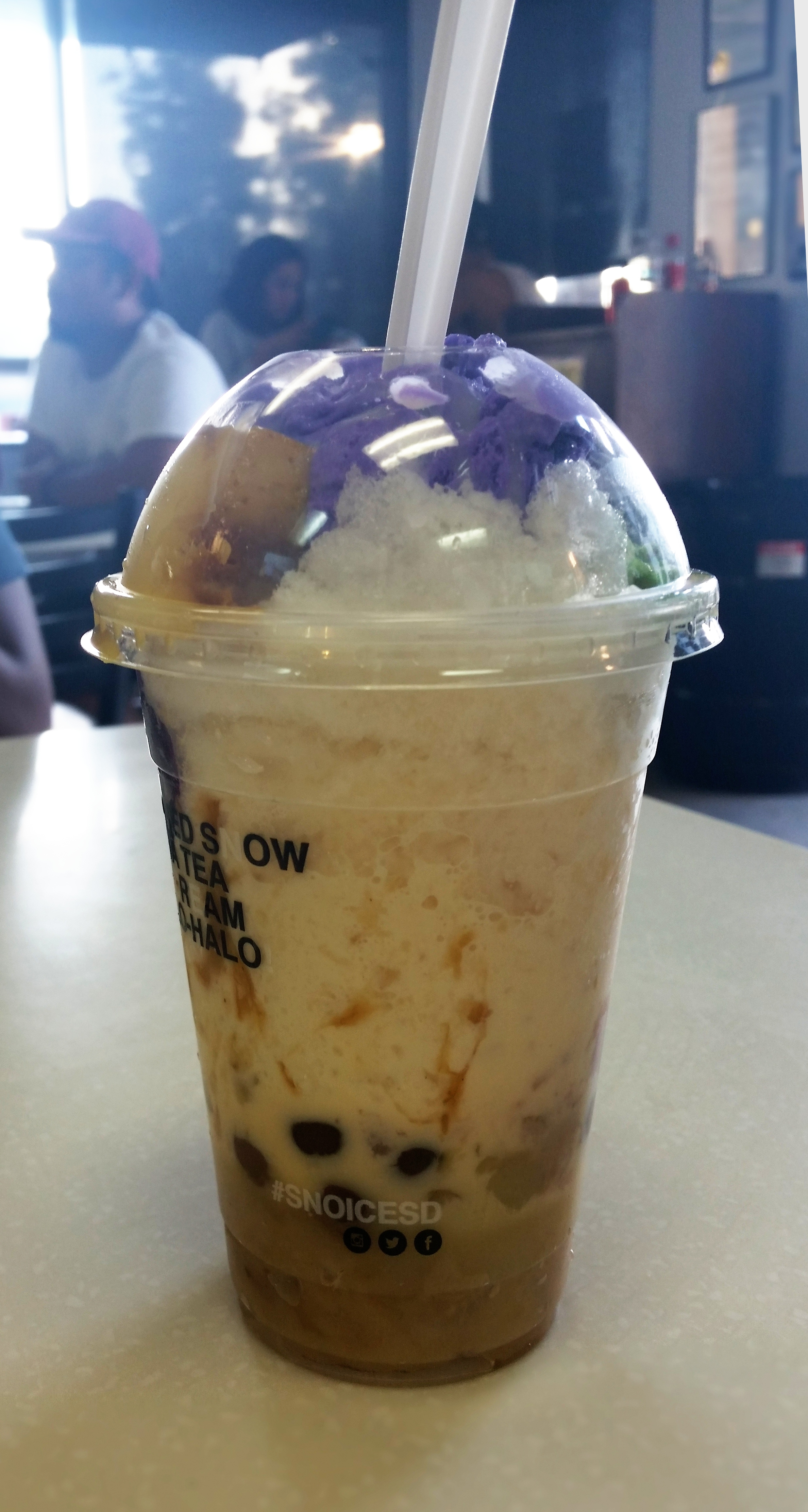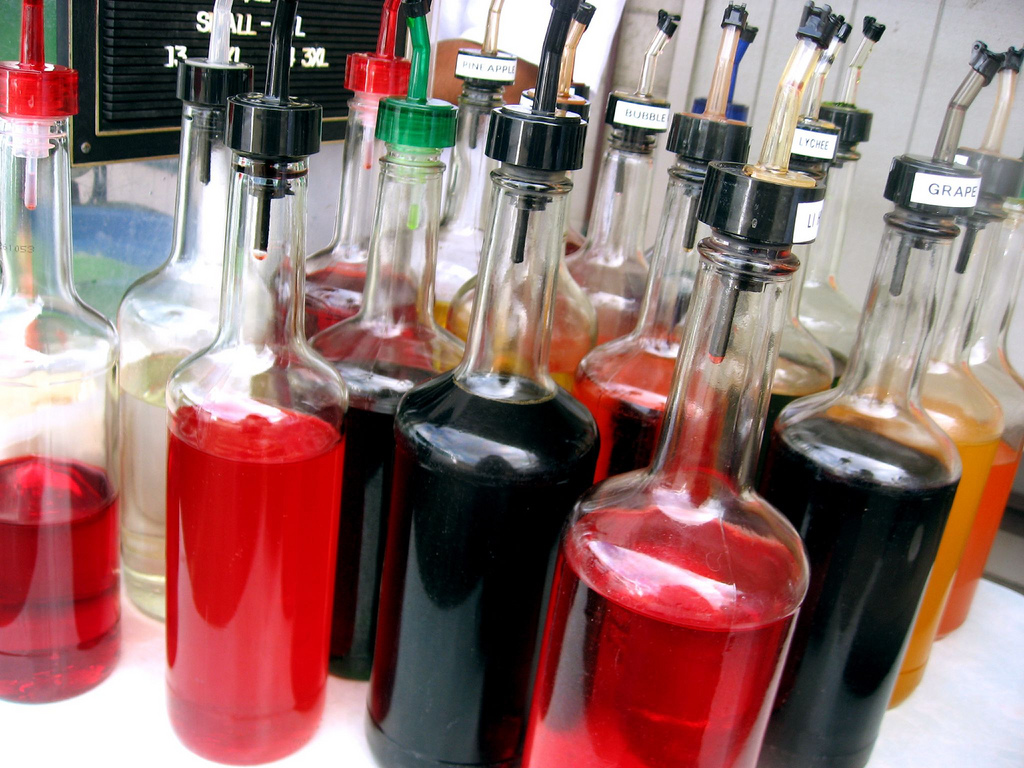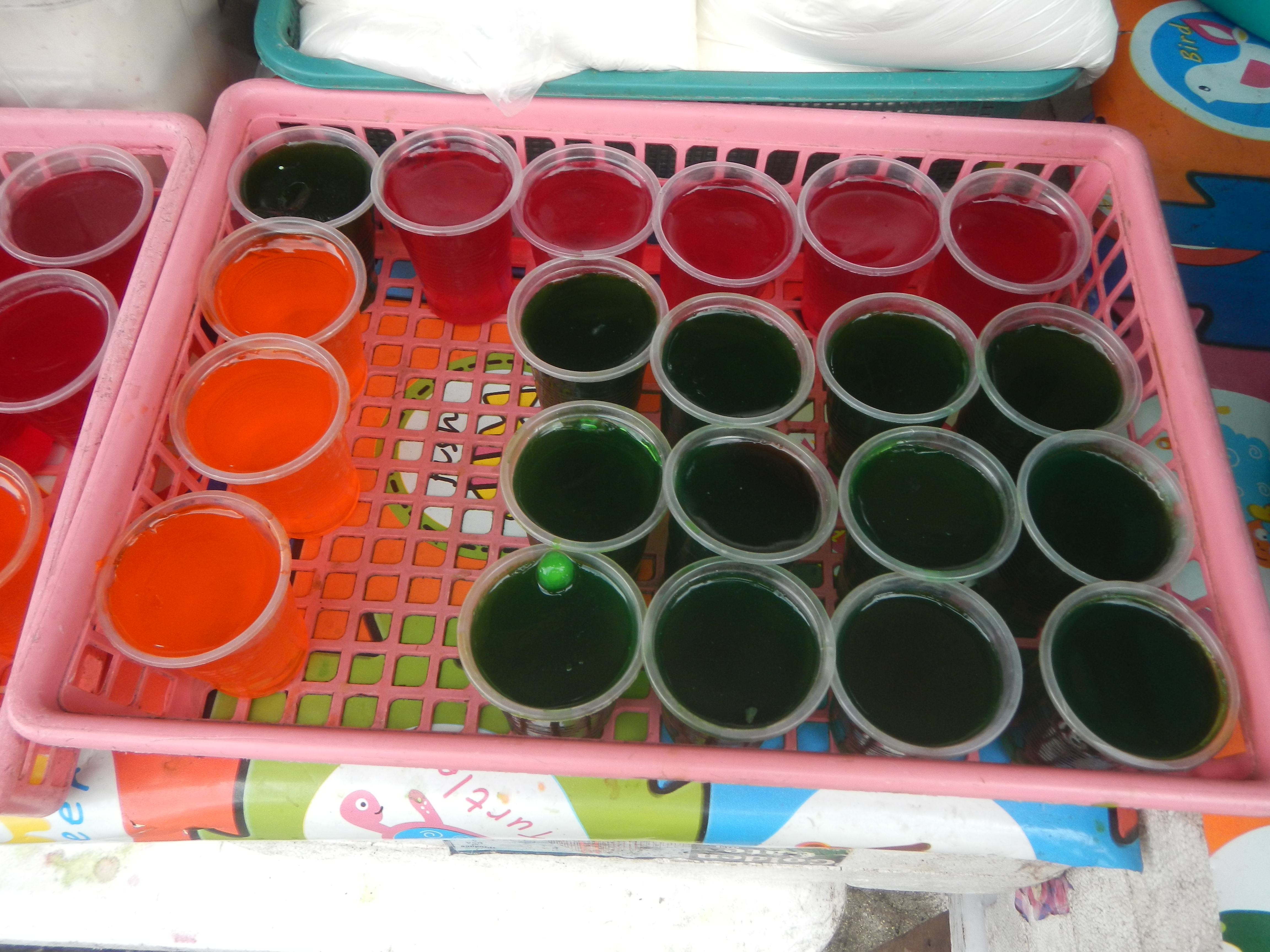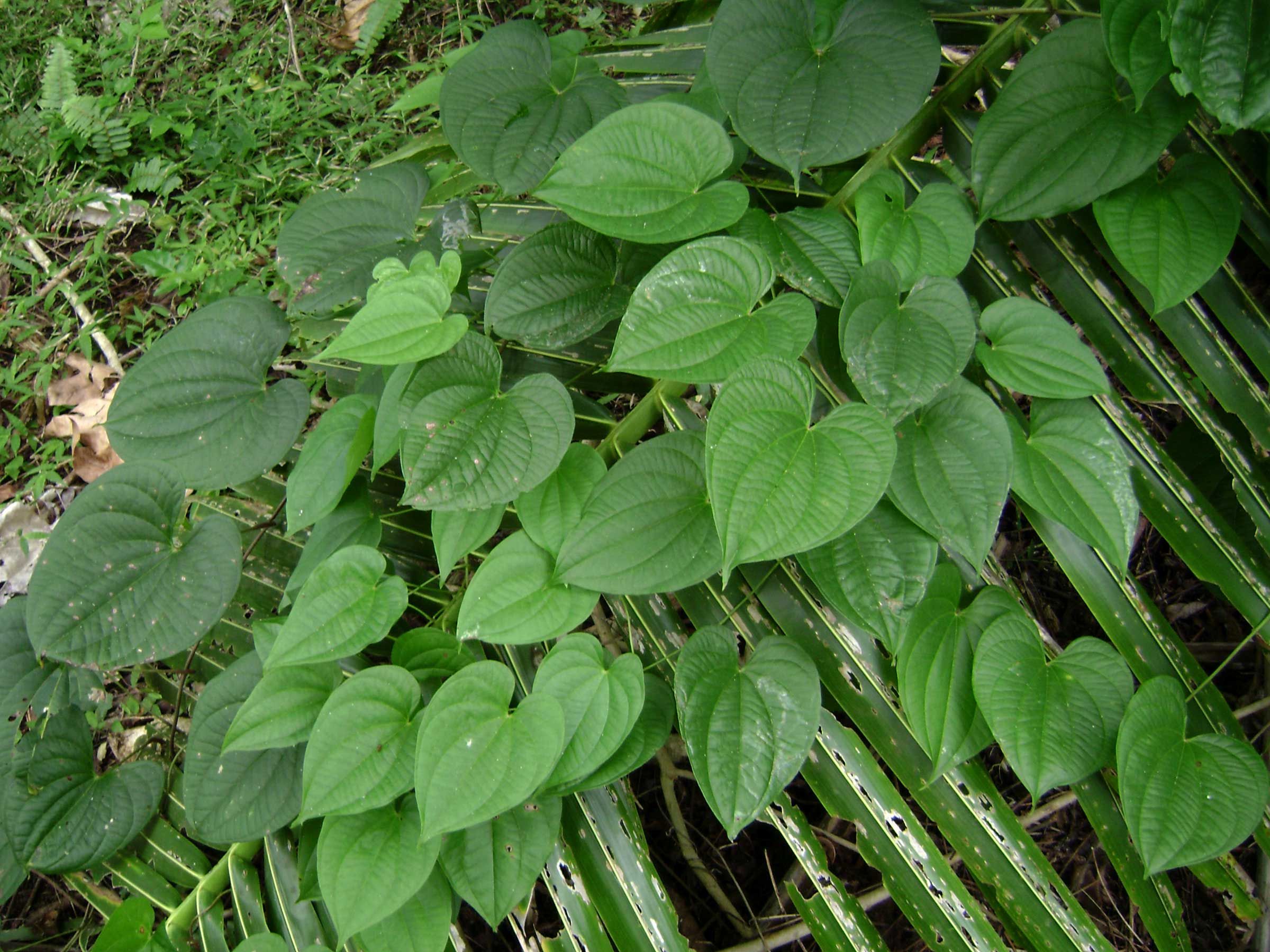|
Halo-halo
Halo-halo, correctly spelled ''haluhalo'', Tagalog for "mixed" (the more common spelling instead literally equating to "mix-mix") is a popular cold dessert in the Philippines made up of crushed ice, evaporated milk or coconut milk, and various ingredients including ube jam (ube halaya), sweetened kidney or garbanzo beans, coconut strips, sago, ''gulaman'' ( agar), pinipig, boiled taro or soft yams in cubes, flan, slices or portions of fruit preserves and other root crop preserves. The dessert is topped with a scoop of ube ice cream. It is usually prepared in a tall clear glass and served with a long spoon. ''Halo-halo'' is considered to be the unofficial national dessert of the Philippines. The term "''halo-halo''" is supposed to mean "mixed" in English because the dessert is meant to be mixed before being consumed. Although strictly grammatically incorrect, this spelling has come to describe any object or situation composed of a similar, colorful combination of ingredient ... [...More Info...] [...Related Items...] OR: [Wikipedia] [Google] [Baidu] |
Ube Ice Cream
Ube ice cream is a Filipino ice cream flavor prepared using ube (purple yam) as the main ingredient. This ice cream is often used in making the dessert halo-halo. History Due to its vivid violet color and mildly sweet and nutty taste, ube has been a staple of Filipino desserts, most notably ube halaya. The earliest recorded use of ube in ice cream was in a recipe from 1922, when ice cream's introduction to Filipino culture during the American occupation (as the local adaptation sorbetes) led to new flavors such as mango, pinipig and melon. The recipe called for mashed ube, milk, sugar and crushed ice. During that time, ice cream was also hand-churned in a ''garapinyera'', a manually operated ice cream mixer. Ube ice cream has risen in popularity outside the Philippines, due to its use by Filipino immigrants in restaurants (often with halo-halo) and Trader Joe's line of ube products, its vivid violet color and the spread of its pictures on social media. Use in halo-halo U ... [...More Info...] [...Related Items...] OR: [Wikipedia] [Google] [Baidu] |
Shaved Ice
Shaved ice is a large family of ice-based desserts made of fine shavings of ice or finely crushed ice and sweet condiments or syrups. Usually, the syrup is added after the ice has been frozen and shaved—typically at the point of sale; however, flavoring can also be added before freezing. The dessert is consumed worldwide in various forms and ways. Shaved ice can also be mixed with large quantities of liquid to produce shaved ice drinks. Many shaved ices are confused with "Italian ice", which is derived from the similar Italian dessert known as " granita". However, Italian ice, also known as "water ice", often has the flavoring (fruit juice or other ingredients, like almond) incorporated into the sugared water before it is frozen. Shaved ice—especially highly commercial shaved ice (such as that found in food chains or from street vendors)—is often flavored after the ice has been frozen and shaved. Snow cones are an example of shaved ice that is flavored after production. H ... [...More Info...] [...Related Items...] OR: [Wikipedia] [Google] [Baidu] |
Banana
A banana is an elongated, edible fruit – botanically a berry – produced by several kinds of large herbaceous flowering plants in the genus ''Musa''. In some countries, bananas used for cooking may be called "plantains", distinguishing them from dessert bananas. The fruit is variable in size, color, and firmness, but is usually elongated and curved, with soft flesh rich in starch covered with a rind, which may be green, yellow, red, purple, or brown when ripe. The fruits grow upward in clusters near the top of the plant. Almost all modern edible seedless ( parthenocarp) bananas come from two wild species – ''Musa acuminata'' and ''Musa balbisiana''. The scientific names of most cultivated bananas are ''Musa acuminata'', ''Musa balbisiana'', and ''Musa'' × ''paradisiaca'' for the hybrid ''Musa acuminata'' × ''M. balbisiana'', depending on their genomic constitution. The old scientific name for this hybrid, ''Musa sapientum'', is no longer used. ''Musa ... [...More Info...] [...Related Items...] OR: [Wikipedia] [Google] [Baidu] |
Ube Halaya
''Ube halaya'' or ''halayang ube'' (variant spellings ''halea'', ''haleya''; from the Spanish ''jalea'', "jam") is a Philippine dessert made from boiled and mashed purple yam (''Dioscorea alata'', locally known as ''ube''). Ube halaya is the main base in ube/purple yam flavored-pastries and ice cream. It can also be incorporated in other desserts such as ''halo-halo''. It is also commonly anglicized as ube jam, or called by its original native name, ''nilupak na ube''. History The Philippines shows the highest phenotypic diversity of ube (''Dioscorea alata''), making it one of the likely centers of origin of ube domestication. Remains of ube have been recovered from the Ille Cave archaeological site of Palawan (c. 11,000 BP). Preparation The main ingredient is peeled and boiled purple yam which is grated and mashed. The mashed yam, with condensed milk (originally sweetened coconut milk), are added to a saucepan where butter or margarine had been melted. The mixture is stirred ... [...More Info...] [...Related Items...] OR: [Wikipedia] [Google] [Baidu] |
Saba Banana
Saba banana (pron. or ), is a triploid hybrid (ABB) banana cultivar originating from the Philippines. It is primarily a cooking banana, though it can also be eaten raw. It is one of the most important banana varieties in Philippine cuisine. It is also sometimes known as the "cardaba banana", though the latter name is more correctly applied to the cardava, a very similar cultivar also classified within the saba subgroup. Description Saba bananas have very large, robust pseudostems that can reach heights of . The trunk can reach diameters of . The trunk and leaves are dark blue-green in color. Like all bananas, each pseudostem flowers and bears fruits only once before dying. Each mat bears about eight suckers. The fruits become ready for harvesting 150 to 180 days after flowering, longer than other banana varieties. Each plant has a potential yield of per bunch. Typically, a bunch has 16 hands, with each hand having 12 to 20 fingers. Saba bananas grow best in well-drained, fert ... [...More Info...] [...Related Items...] OR: [Wikipedia] [Google] [Baidu] |
Yam (vegetable)
Yam is the common name for some plant species in the genus '' Dioscorea'' (family Dioscoreaceae) that form edible tubers. Yams are perennial herbaceous vines cultivated for the consumption of their starchy tubers in many temperate and tropical regions, especially in West Africa, South America and the Caribbean, Asia, and Oceania. The tubers themselves, also called "yams", come in a variety of forms owing to numerous cultivars and related species. Yams were independently domesticated on three different continents: Africa (''Dioscorea rotundata''), Asia (''Dioscorea alata''), and the Americas (''Dioscorea trifida''). Etymology The name "yam" appears to derive from Portuguese ''inhame'' or Canarian (Spain) ''ñame'', which derived from West African languages during trade. However in both languages, this name commonly refers to the taro plant (''Colocasia esculenta'') from the genus ''Colocasia'', as opposed to '' Dioscorea''. The main derivations borrow from verbs me ... [...More Info...] [...Related Items...] OR: [Wikipedia] [Google] [Baidu] |
Gulaman
''Gulaman'', in Filipino cuisine, is a bar, or powdered form, of dried agar or carrageenan used to make jelly-like desserts. In common usage, it also usually refers to the refreshment ''sago't gulaman'', sometimes referred to as ''samalamig'', sold at roadside stalls and vendors. Description ''Gulaman'' is the Filipino culinary use of agar, which is made of processed ''Gracilaria'' seaweed; or carrageenan derived from other farmed seaweed species like ''Eucheuma'' and ''Kappaphycus alvarezii'' which were first cultivated commercially in the Philippines. It is usually sold dehydrated and formed into foot-long dry bars which are either plain or coloured. It is also commonly sold in powder form. Uses ''Gulaman'' bars are used in the various Filipino refreshments or desserts such as '' sago at gulaman'', ''buko pandan'', agar flan, ''halo-halo'', ''fruit cocktail jelly'', different varieties of Filipino fruit salads, black ''gulaman'', and red ''gulaman''. Differences between ... [...More Info...] [...Related Items...] OR: [Wikipedia] [Google] [Baidu] |
Macapuno
Macapuno or coconut sport is a naturally occurring coconut cultivar which has an abnormal development of the endosperm. The result of this abnormal development is a soft translucent jelly-like flesh that fills almost the entire central cavity of coconut seeds, with little to no coconut water. Macapuno was first described scientifically from wild specimens in 1931 by Edwin Copeland. They were cultivated commercially in the Philippines after the development of the "embryo rescue" Plant tissue culture, ''in vitro'' culture technology in the 1960s by Emerita V. De Guzman. It has become an important crop in List of countries by coconut production, coconut-producing countries and is now widely used in the cuisines of Southeast Asia and the Pacific Islands. Name The name ''macapuno'' (also spelled ''makapuno'') is derived from Tagalog language, Tagalog , the local name of the phenotype in the Philippines, meaning "characterized by being full", a reference to the way the endosperm in mac ... [...More Info...] [...Related Items...] OR: [Wikipedia] [Google] [Baidu] |
Chickpea
The chickpea or chick pea (''Cicer arietinum'') is an annual legume of the family Fabaceae, subfamily Faboideae. Its different types are variously known as gram" or Bengal gram, garbanzo or garbanzo bean, or Egyptian pea. Chickpea seeds are high in protein. It is one of the earliest cultivated legumes, and 9500-year-old remains have been found in the Middle East. The chickpea is a key ingredient in Mediterranean and Middle Eastern cuisines, used in hummus, and, when ground into flour, falafel. It also is important in Indian cuisine, used in salads, soups and stews, and curry, in chana masala, and in other meal products like channa. In 2019, India was responsible for 70% of global chickpea production. Etymology The name "chickpea," earlier "chiche pease," is modelled on Middle French ', where ''chiche'' comes from Latin '. "Chich" was used by itself in English from the 14th to the 18th centuries.''Oxford English Dictionary'', 3rd edition, December 201''s.v.''/ref> The word ', fr ... [...More Info...] [...Related Items...] OR: [Wikipedia] [Google] [Baidu] |
Agar
Agar ( or ), or agar-agar, is a jelly-like substance consisting of polysaccharides obtained from the cell walls of some species of red algae, primarily from ogonori (''Gracilaria'') and "tengusa" (''Gelidiaceae''). As found in nature, agar is a mixture of two components, the linear polysaccharide agarose and a heterogeneous mixture of smaller molecules called agaropectin. It forms the supporting structure in the cell walls of certain species of algae and is released on boiling. These algae are known as agarophytes, belonging to the Rhodophyta (red algae) phylum. The processing of food-grade agar removes the agaropectin, and the commercial product is essentially pure agarose. Agar has been used as an ingredient in desserts throughout Asia and also as a solid substrate to contain culture media for microbiological work. Agar can be used as a laxative; an appetite suppressant; a vegan substitute for gelatin; a thickener for soups; in fruit preserves, ice cream, and other desser ... [...More Info...] [...Related Items...] OR: [Wikipedia] [Google] [Baidu] |
Purple Yam
''Dioscorea alata'', also known as purple yam, ube (, ), or greater yam, among many other names, is a species of yam (a tuber). The tubers are usually a vivid violet-purple to bright lavender in color (hence the common name), but some range in color from cream to plain white. It is sometimes confused with taro and the Okinawa sweet potato (''Ipomoea batatas'' cv. Ayamurasaki), although ''D. alata'' is also grown in Okinawa, where it is known as . With its origins in the Asian tropics, ''D. alata'' has been known to humans since ancient times. Names Because it has become naturalized following its origins in Asia, specifically the Philippines, through tropical South America, and the southeastern U.S., ''D. alata'' is referred to by many different names in these regions. In English alone, aside from purple yam, other common names include ten-months yam, water yam, white yam, winged yam, violet yam, Guyana arrowroot, or simply yam. History of cultivation ''Dioscorea alata'' i ... [...More Info...] [...Related Items...] OR: [Wikipedia] [Google] [Baidu] |
Tagalog Language
Tagalog (, ; ; '' Baybayin'': ) is an Austronesian language spoken as a first language by the ethnic Tagalog people, who make up a quarter of the population of the Philippines, and as a second language by the majority. Its standardized form, officially named ''Filipino'', is the national language of the Philippines, and is one of two official languages, alongside English. Tagalog is closely related to other Philippine languages, such as the Bikol languages, Ilocano, the Bisayan languages, Kapampangan, and Pangasinan, and more distantly to other Austronesian languages, such as the Formosan languages of Taiwan, Indonesian, Malay, Hawaiian, Māori, and Malagasy. Classification Tagalog is a Central Philippine language within the Austronesian language family. Being Malayo-Polynesian, it is related to other Austronesian languages, such as Malagasy, Javanese, Indonesian, Malay, Tetum (of Timor), and Yami (of Taiwan). It is closely related to the languages spoken in the Bi ... [...More Info...] [...Related Items...] OR: [Wikipedia] [Google] [Baidu] |



_01.jpg)



.jpg)



